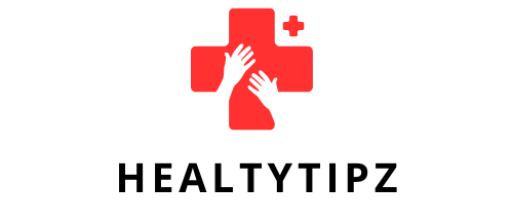How to Get Health Insurance After You Lose Your Job
Losing a job is stressful enough, but one of the most common fears is the loss of health insurance. In the United States and many other countries, health insurance is tightly linked to employment, so a sudden job loss might leave you and your family exposed. Fortunately, there are various practical choices to help you stay covered and preserve your health, especially during this uncertain period.
In this extensive tutorial, we’ll go over how to acquire health insurance after losing your work, the many types of coverage available, and how to select the best plan for your needs.

1. Learn What Happens to Your Health Insurance If You Lose Your Job.
An employer-sponsored plan covers the majority of employees’ health insurance needs. When you lose your work, whether you quit, are laid off, or are fired, your employer’s contribution to your health insurance usually expires on your final day or at the end of the month.
You may be able to continue your coverage temporarily, but you must understand how the procedure works. You’ll need to act promptly to avoid a gap in your health insurance coverage.
Key takeaway: Do not wait until you are uninsured. As soon as you realize your employment is coming to an end, start looking into your choices.
Option 1: Continue coverage through COBRA
COBRA (Consolidated Omnibus Budget Reconciliation Act) is one of the most popular ways to retain your health insurance following a job loss. It permits you to keep your employer-sponsored plan for a short period, normally up to 18 months, but sometimes longer in unusual circumstances.
How COBRA Works
You pay the entire premium, including your half and the employer’s payment, plus a modest administrative charge (up to 2%).
You must elect COBRA coverage within 60 days of leaving your employment or receiving notification from your employer.
Your coverage remains as before, allowing you to maintain your physicians and perks.
PROS OF COBRA
You keep the same coverage and provider network.
There is no need to reapply for new insurance or meet new deductibles.
Immediate continuation without coverage gaps.
CONS OF COBRA
It’s pricey since you’re paying the full premium yourself.
It’s only transitory, lasting around 18 months.
If your workplace no longer provides a group health plan, you will not be able to access it.
Best for: People who want to maintain their existing plan but can afford to pay higher rates temporarily.
Option 2: Marketplace (ACA) Health Plans
If COBRA isn’t inexpensive or available, the Health Insurance Marketplace (Healthcare.gov in the United States) is your next best alternative. Losing your work qualifies as a Special Enrollment Period (SEP), so you don’t have to wait until open enrollment to join up.
How To Apply
Visit Healthcare.gov (or your state’s marketplace website) within 60 days of losing coverage.
Compare plans based on pricing, coverage, and network.
Determine whether you qualify for premium tax credits or subsidies to reduce your monthly cost.
Pros of Marketplace Plans:
You may be eligible for financial help based on your income.
A wide range of programs, from simple (Bronze) to extensive (Platinum).
Preventive treatment and important health benefits are constantly provided.
Cons of Marketplace Plans:
Plans may use different provider networks than your previous one.
Out-of-pocket expenses might vary.
To get the best fit, thoroughly examine your alternatives.
Individuals or families in need of inexpensive coverage and qualified for government subsidies are best served.
Option 3: Medicaid and CHIP (Low-Income Options).
If your job loss has drastically reduced your income, you may be eligible for Medicaid or, if you have children, the Children’s Health Insurance Program (CHIP).
What is Medicaid?
Medicaid offers free or low-cost coverage to individuals and families with limited income. Eligibility varies by state, although it is often based on household income and size.
How To Apply
Visit your state’s Medicaid website or apply on Healthcare.gov.
There is no requirement for an open enrollment period; you can apply at any time.
If accepted, coverage may be retroactive for up to three months.
Pros of Medicaid
Low or no premiums.
Comprehensive coverage includes medical visits, medicines, and hospitalization.
There is no time limit—you can stay as long as you qualify.
Cons of Medicaid
Provider networks may be smaller.
Certain services may require prior clearance.
Best for: People with minimal income or those who anticipate a lengthy break before finding a new career.
Option 4: Short-term Health Insurance.
Short-term health insurance plans are temporary choices that offer restricted coverage for a set period of time, often three to twelve months.
Key Features:
Designed to keep you safe during brief gaps in covering.
Often far less expensive than traditional insurance.
Quick approval—you may usually get insured within 24 hours.
Pros of Short-Term Plans
Monthly rates are affordable.
Flexible terms (cancel anytime).
Quick and simple application procedure.
Cons of Short-Term Plans:
Preventive care, maternity, and mental health may be excluded due to limited coverage.
Pre-existing conditions may be excluded from coverage.
This is not a substitute for long-term insurance.
Ideal for: Healthy people who want temporary protection while between employment.
Option 5: Participating in a spouse or parent’s plan.
If your spouse or parent has employer-sponsored insurance, you may be eligible to join their plan.
How It Works.
Losing your employment is classified as a Special Enrollment Event, allowing you to join their plan within 30 days.
You will share coverage under their employer’s policy, and rates may rise significantly depending on the plan.
Pros
A reputable plan provides seamless coverage.
Often less expensive than COBRA or private insurance.
Coverage might last as long as the spouse or parent is employed.
Cons
You are reliant on another person’s work and coverage status.
Not everybody has this choice.
Ideal for: Married people or young adults under 26 who can be joined to a family plan.
Tips for Selecting the Best Health Insurance Option
The best health insurance after job loss is determined by your budget, health requirements, and long-term objectives. Consider these tips:
Compare the overall cost, including deductibles, copays, and out-of-pocket maximums.
Check the provider network to confirm your chosen physicians and hospitals are covered.
Check your prescription coverage, especially if you use frequent drugs.
Don’t wait; missing enrollment deadlines might leave you uninsured.
Use financial help tools, since many marketplace and Medicaid programs provide subsidies.
Ways to Avoid Coverage Gaps
Even a brief coverage gap may be harmful and costly. Here’s how you can keep protected:
Apply early. Begin examining possibilities as soon as you receive your termination notice.
Understand grace periods: Some plans are valid until the end of the month after your employment expires.
Keep documentation of coverage; it may be required when enrolling in a new plan or making a claim.
Conclusion
Losing your work does not have to mean losing your health insurance. There are several options for staying insured, including COBRA and marketplace plans, Medicaid, and short-term coverage. The goal is to act fast, assess your financial condition, and select the best plan for your needs.
Your health is one of your most significant possessions, and staying covered is critical, especially during times of uncertainty. By taking proactive efforts and investigating all available choices, you may successfully negotiate this shift while protecting yourself and your loved ones.



